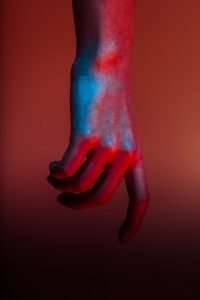Why Chicano Art has nothing to do with Mexico:
I am calling this blog “Why Chicano Art has NOTHING to do with Mexico” because no one ever explains why it does. I am tired of the assumption that Chicano Art is a direct product of Mexican Culture. That’s like saying, “Why aren’t there any female rappers? Rap is a direct product of Black Culture.” The problem is that while one can trace Black folk songs and blues back to Africa, there is no similar provenance for Mexican folk songs or Chicano Rap. Just like there is no real connection between the Native American Mound Builders and Rock n’ Roll other than the fact that they are both from America.
Songs and art have been used to record history but they have also been used as history. The way we understand the past shapes the way we understand the present. We tend to think of Mexican-American culture as a stable thing that has existed since before Columbus arrived. But even if one ignores the actual history (which doesn’t help you very much in understanding what’s happening now), it’s still important to realize that there is also an official or invented version of Chicano Art History that has been constructed in order to justify our current situation.
Art
I call myself Chicano; which means I’m from the Southwest, and of course I’m Mexican. However that doesn’t mean I have a special affinity for this artwork, or that it has anything to do with Mexico. It’s a new art form that has been created by Chicanos in the United States.
A lot of people see Mexican or Chicano art and its relationship to Mexico as a point of contention to be clarified. To me it is simple: Chicano art has nothing to do with Mexico because Chicano Art isn’t supposed to be about Mexico.
Chicanismo was born here in the United States, and this is where it finds its identity. There is nothing wrong with being proud of your Mexican heritage, but there is something wrong with making Chicano Art seem more Mexican than American. Art can be many things, but it should never be confused as coming from anywhere else other than where it is created and resides at that moment in time. We shouldn’t need to say that, but apparently we do…
The whole idea of Chicano Art being from Mexico needs to die…
Take Diego Rivera’s work for example… Rivera was not an artist who painted only about Mexico even though he was born there; he painted about what he saw
The Mexican Mural Movement, or in Spanish Movimiento Muralista Mexicano, was the muralism art movement that was created and popularized by artists in Mexico, beginning during World War II following government support of a cultural campaign to promote national identity and art. Some of the artist that took part in this movement were Diego Rivera, David Alfaro Siqueiros, Jose Clemente Orozco and Rufino Tamayo. They all painted murals that promoted nationalism and identity for Mexico.
It is important to know that Chicano Art has nothing to do with it. The Chicano Movement was created in the 60’s as a social activist group for Chicanos/Mexicanos living in the United States. The Mexican mural movement is from the 40’s and 50’s when Diego Rivera and other famous Mexican painters were creating great masterpieces on Mexican culture. The difference between the two is that Chicanos are a group of people who migrated from Mexico to the United States because of poverty and lack of opportunities. They didn’t have money to purchase their own land or they were discriminated against because of their skin color or their culture being different from European Americans. For example, my mom grew up in a time where she wasn’t allowed
Chicano art is a term that refers to the art of Mexican Americans and Mexican immigrants in the United States. It is also used to refer to the visual expression of these communities …
The Chicano Art Movement is a generally accepted term given to artwork created by Mexican American artists living in the United States during the 1960s and 1970s. The movement was an artistic response to the social, political and economic issues that many Mexican Americans faced at the time. The Chicano Art Movement had roots in the muralism movement of the 1930s and 1940s and is considered one of the last iterations of social realism in art.
Mariachi music, which blends elements of indigenous music with Spanish elements, was popular with Mexican Americans in California during this period. Chicano artist Graciela Carrillo created “The Mural (La Pared de la Recolte),” from 1968. The mural depicts Mexican American farmworkers harvesting crops during World War II.
Another artist, Judith Baca went on to create several murals around Los Angeles, including “East Los Streetscapers” in 1986 and “Great Wall of Los Angeles” in 2005.
Chicano art has been criticized for not being truly Mexican or Latino because it does not incorporate Latin American cultural themes.< Chicano Art is a movement that grew in the 1960's and 1970's. It is considered the first truly revolutionary Mexican American art movement. Chicano art is a reflection of the Chicano community. The political issues of the "Chicanos" or Mexican American people are reflected in the work. These political issues include discrimination and lack of equal opportunity, police brutality, low wages for workers, and segregation – as well as other cultural identity issues. Through Chicano Art it became clear that our people were not only politically oppressed but also culturally repressed by the dominant culture which was Anglo-American: their values, their standards, their language, their dress, their music, and so on. The Chicano artist then chose to use his/her talents to express the injustice done to the Chicano people in order to awaken those who had been lulled into apathy by their oppressors and to inspire those whose spirits had been broken by fear and intimidation. By using one's talent for social activism not only can you expose injustice but you can also help change it. The movement was characterized by political slogans such as "Por La Raza todo y Por los Raza nada." Which means "For The Race everything and for Chicano Art is an international art form with roots in San Diego, California. Muralism, a style of painting murals with vivid colors and bold images, has been the most popular form of Chicano Art for decades. The murals created by Diego Rivera, David Alfaro Siqueiros and other Mexican muralists inspired many Chicano artists to follow in their footsteps, using their rich cultural backgrounds to create works of art that are meant to be seen by all people. The content of many Chicano murals focus on themes such as the history of the Mexican people in America, the struggle for civil rights, and a fight against social injustice. Tijuana makes a great example of how Chicano Art is not just limited to San Diego, but has reached across the border into Mexico. In Tijuana there are close to one hundred murals painted by Chicanos from San Diego, featuring themes that relate directly to life on both sides of the border: drug cartel violence, human trafficking and freedom of speech. However, one thing that differentiates Chicano Art from other forms of art is its absence of European influence: no Renaissance paintings or classical sculptures. Rather than modeling their work after Western European styles and figures, Chicano artists take inspiration from Aztec The Chicana/o art movement was born in the late 1960s and early 1970s in institutions such as the University of California-Riverside, San Francisco State University, and the Art Department at California State University-Long Beach. These institutions were bastions of liberalism and saw the Chicano Movement as an opportunity to make a political statement. They were willing to provide financial support for Chicano artists because they were interested in the role of art in social change. Tensions existed between university-based artists and community artists throughout the Chicano Movement. The differences were both ideological and practical. The university-based artists saw themselves as part of a national art community while community artists viewed themselves as part of a political struggle that happened to use art as a strategy (the two groups might be better described as 'university' and 'community' rather than 'campus' and 'ghetto'). The former group tended to embrace liberal ideology and abstract expressionism while the latter group embraced radical politics and figurative work. The Chicano Artist's Rendezvous at Del Monte Park in East Los Angeles on April 15, 1971 is often considered to be the prototype for community-based art centers. Several hundred people gathered on a Sunday afternoon to share their artwork, listen to music,


